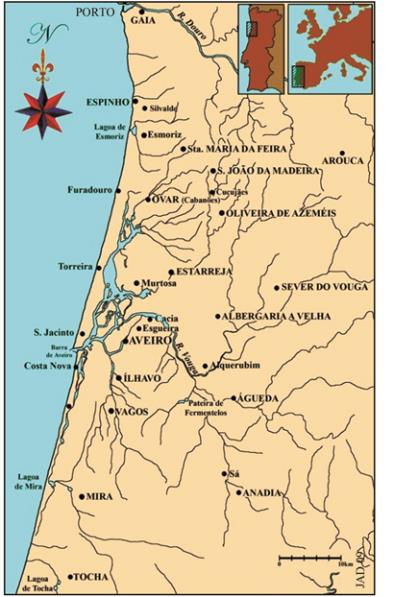Basic HTML Version



International Journal of Marine Science 2013, Vol.3, No.28, 219-224
http://ijms.sophiapublisher.com
219
Research Article Open Access
Fish Distribution in Fauna Data in Lagoon of Aveiro (North Portugal): a
Comparative Analysis between 1758 and the Present — An Interdisciplinary
Case Study
M.R. Bastos
1
, Vidal A.
2
, Azeiteiro U.M.
3
, Dias J.A.
4
1 Open University of Portugal & Cepese - Centre of Research of Population, Economy and Society, Oporto, Portugal
2 Cepese - Centre of Research of Population, Economy and Society, Oporto, Portugal
3 Open University of Portugal & CFE – Centre for Functional Ecology, University of Coimbra, Coimbra, Portugal
4 CIMA- Centre of Marine and Environmental Research, University of Algarve, Faro, Portugal
Corresponding author email: rbastos@uab.pt
International Journal of Marine Science, 2013, Vol.3, No.28 doi: 10.5376/ijms.2013.03.0028
Received: 16 Apr., 2013
Accepted: 17 May, 2013
Published: 02 Jun., 2013
Copyright
©
2013 Bastos
et al
., This is an open access article published under the terms of the Creative Commons Attribution License, which permits unrestricted
use, distribution, and reproduction in any medium, provided the original work is properly cited.
Preferred citation for this article:
Bastos
et al
., 2013, Fish Distribution in Fauna Data in Lagoon of Aveiro (North Portugal): a Comparative Analysis between 1758 and the Present — An
Interdisciplinary Case Study, International Journal of Marine Science, Vol.3, No.28 219
-
224 (doi: 10.5376/ijms.2013.03.0028)
Abstract
The present study aims to identify fish species mentioned in the Parish Descriptions of 1758 to the lagoon of Aveiro,
comparing them with those existing at present. By crossing and interpretation of the resulting data of these two analyses (1758 and
timeliness), we can identify which species that remain and those who no longer have individuals in the habitats listed in historical
source. Explanatory hypotheses are presented to the absence or presence of fish species. Special attention is also being paid to
anadromous and catadromous fish which are extremely vulnerable to anthropic impacts meantime introduced in lagoon and river
ecosystems.
Keywords
Aveiro's Lagoon; Historical Data; Ichthyofauna; Anthropic impacts
Introduction
The lagoon of Aveiro, improperly called “Ria de
Aveiro” (because “rias” are flooded river valleys,
whose paradigm can be found in Northern Spain
Galician Rias), is located in the NW of Portugal,
between the city of Coimbra and Porto, more properly
between Espinho and Mira (Figure 1). The lagoon was
developed in NNE-SSW direction (parallel to the
present Oceanic coast). Presently, the lagoon is about
40 km in length, approximately between latitudes
40°52' N and 40°31' N, having maximum width, in the
central sector, about 8 km. It is separated from the sea
by a sandy strand of variable width, with almost 2.5
km maximum and minimum of less than 200 m.
As a result of the need for further dialogue between
various scientific disciplines, namely history, biology
and geology, we developed an interdisciplinary work
based on references to fishes found on historical
sources from the 18
th
century and compared this
information with the presently existing species taking
into account the geomorphological modifications
meanwhile observed.
Figure 1 Map of the study area

